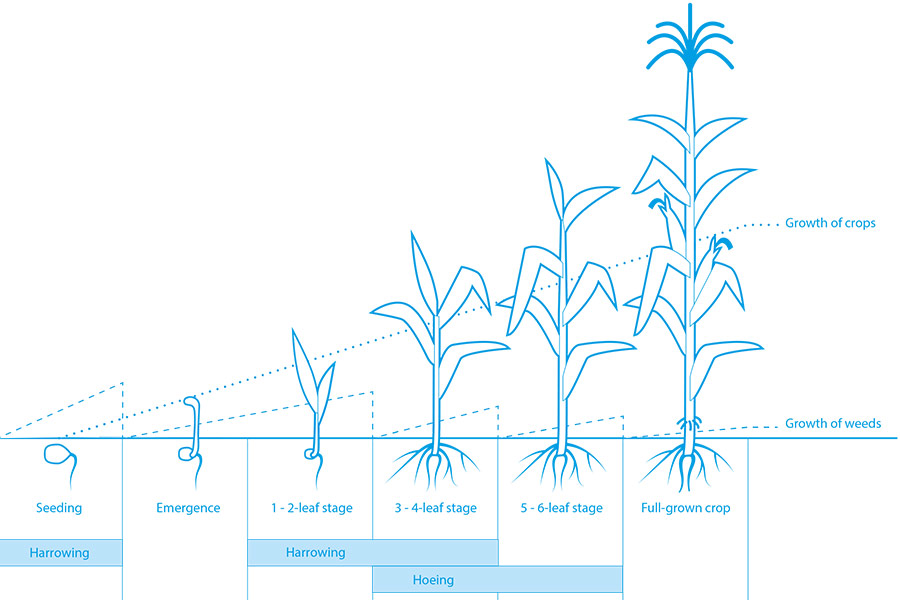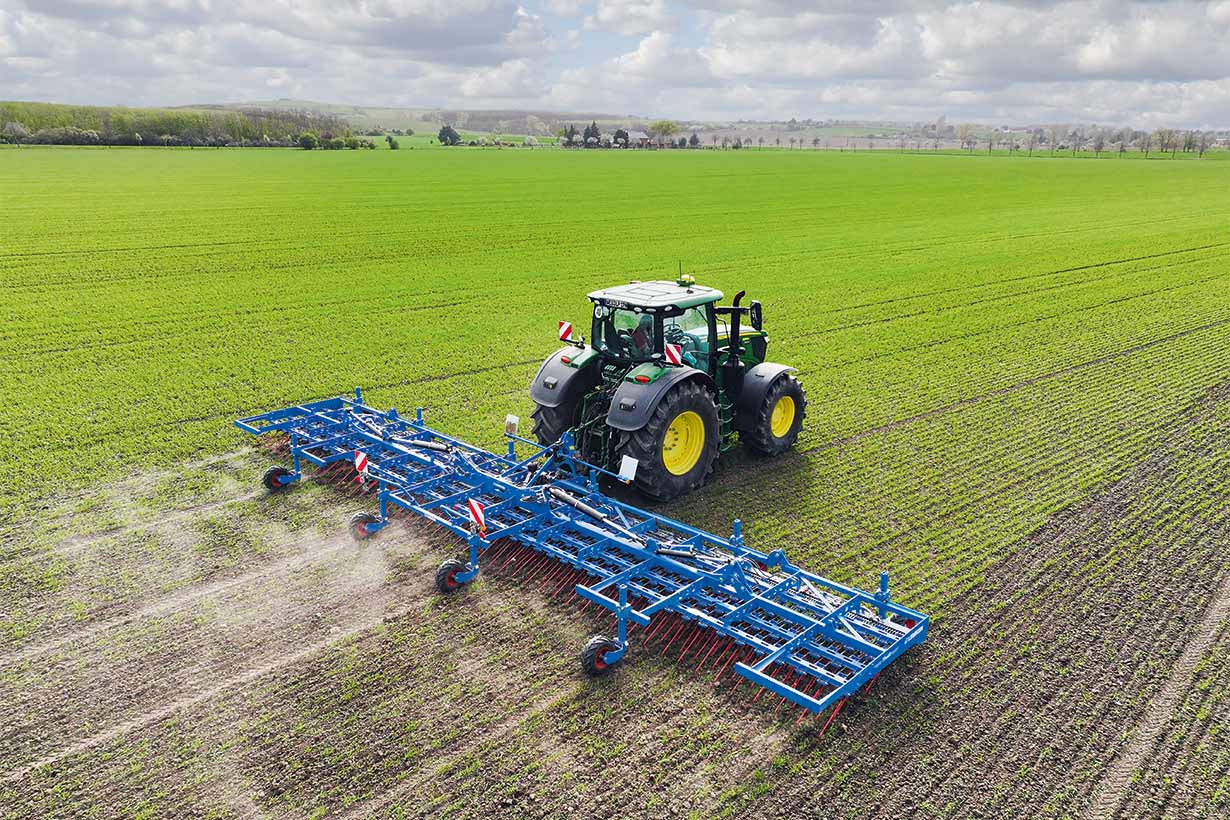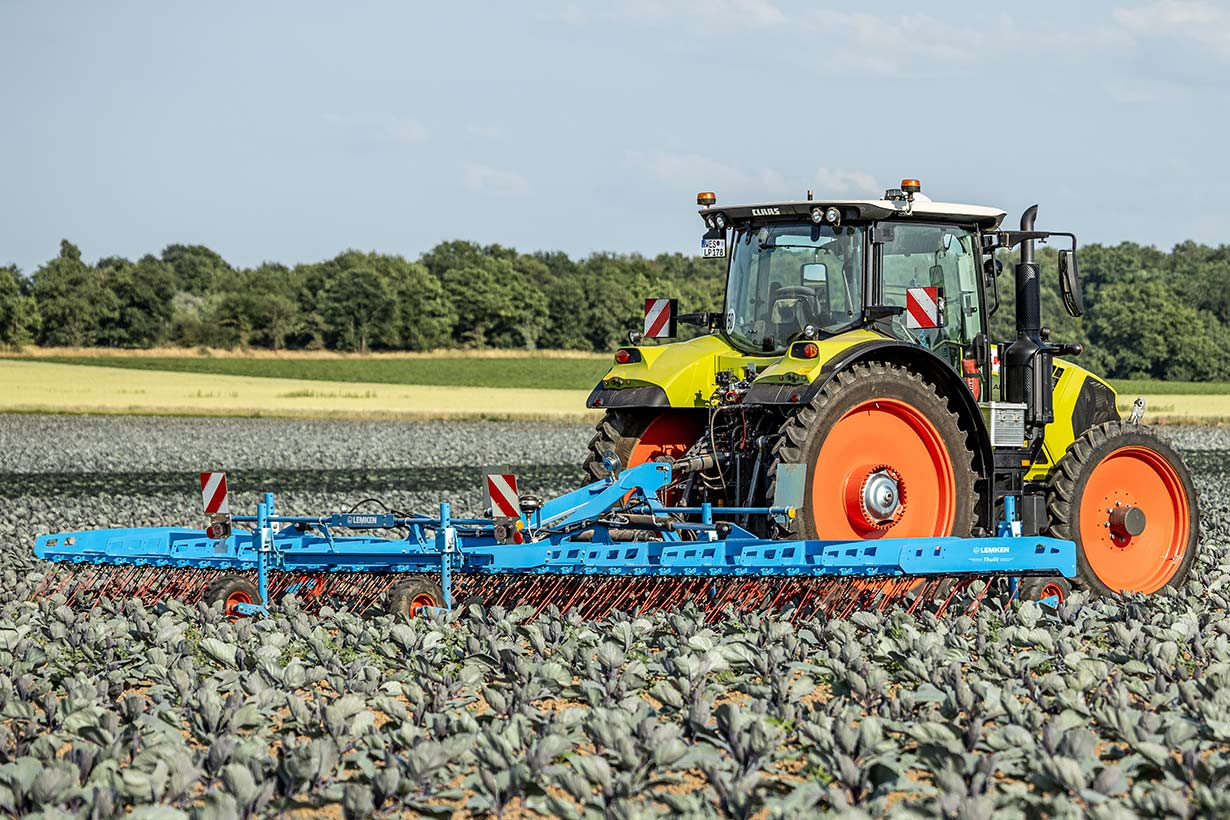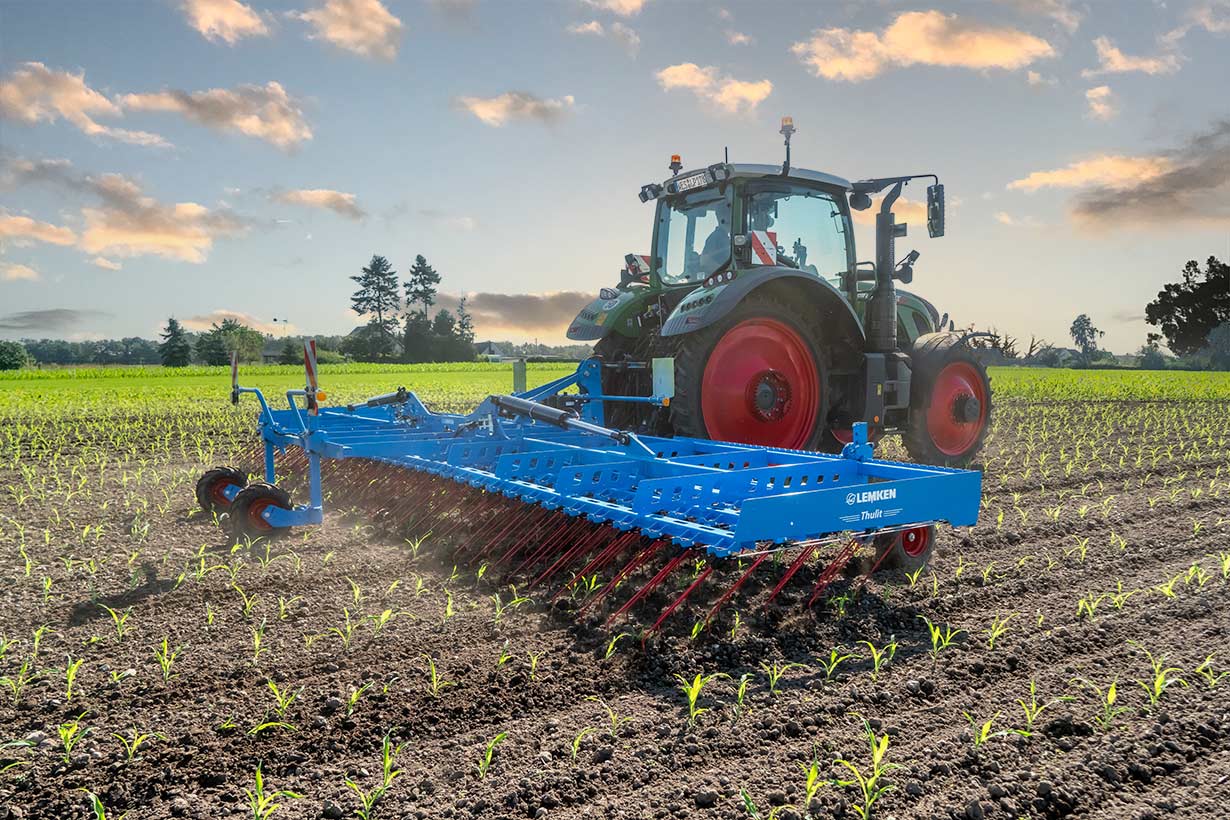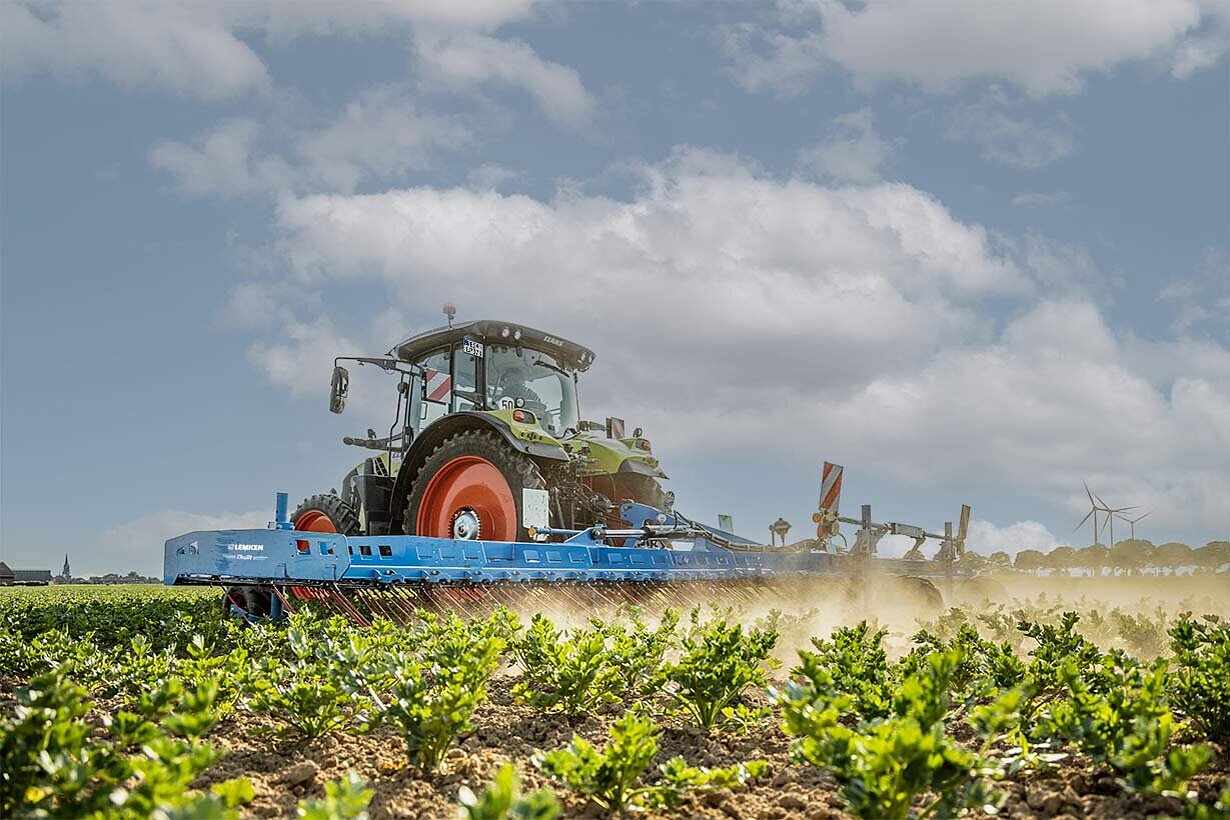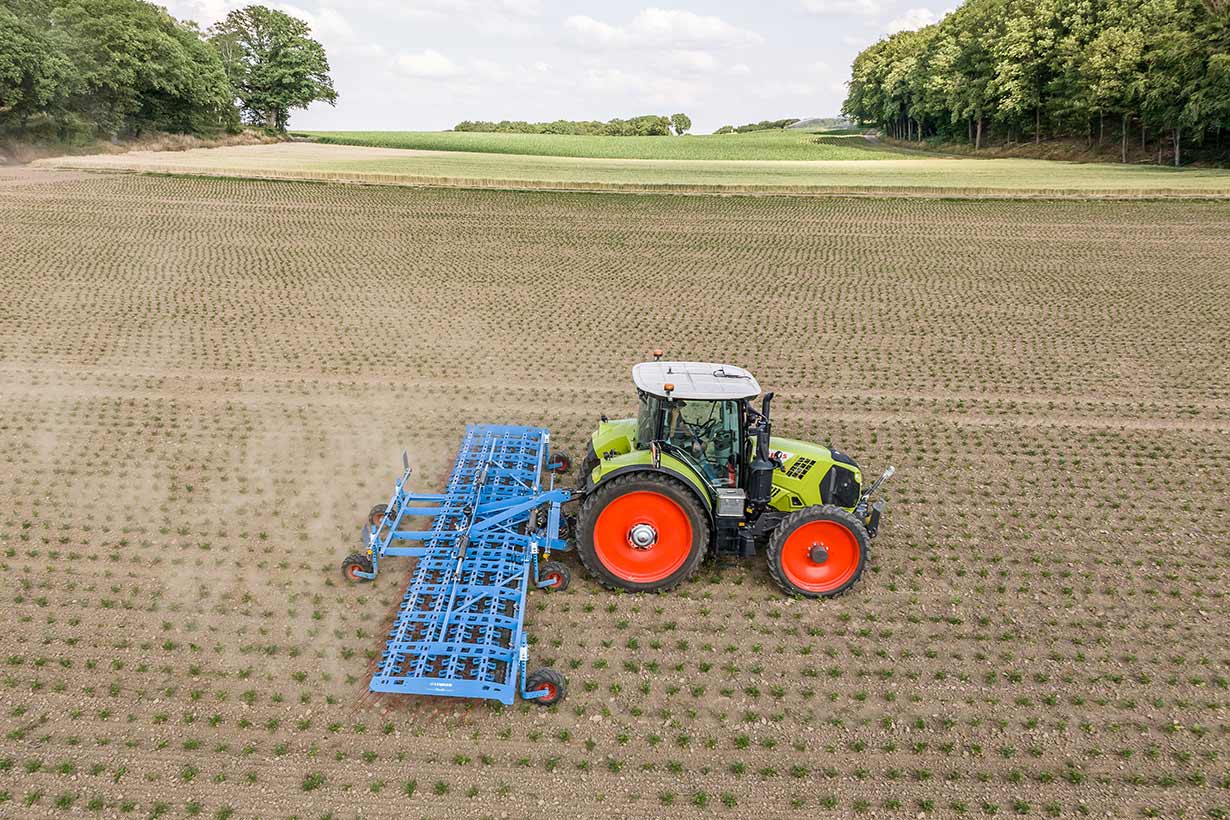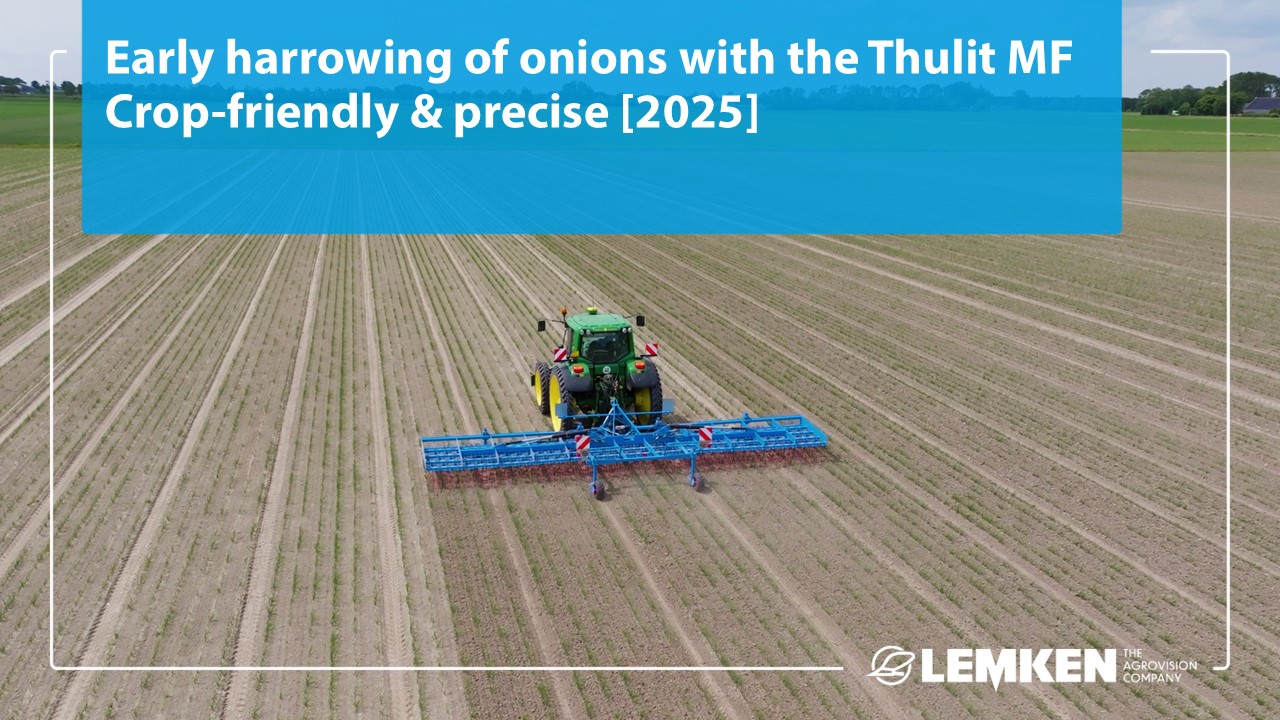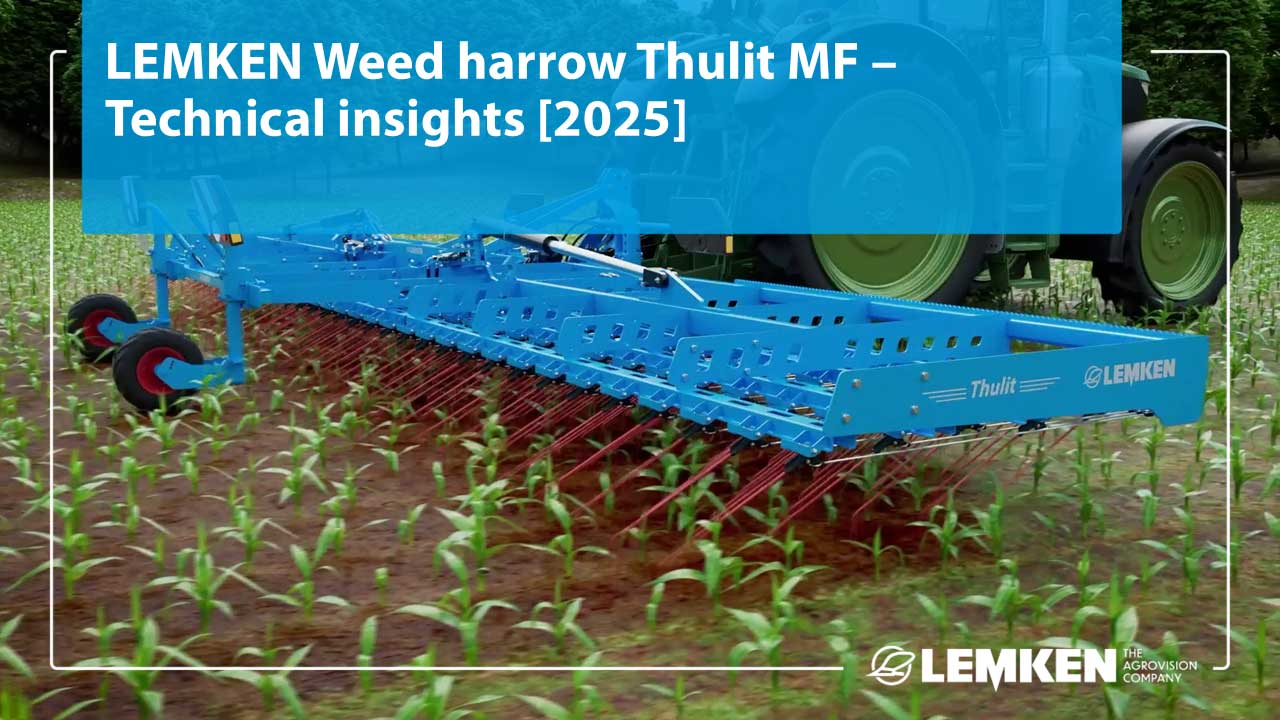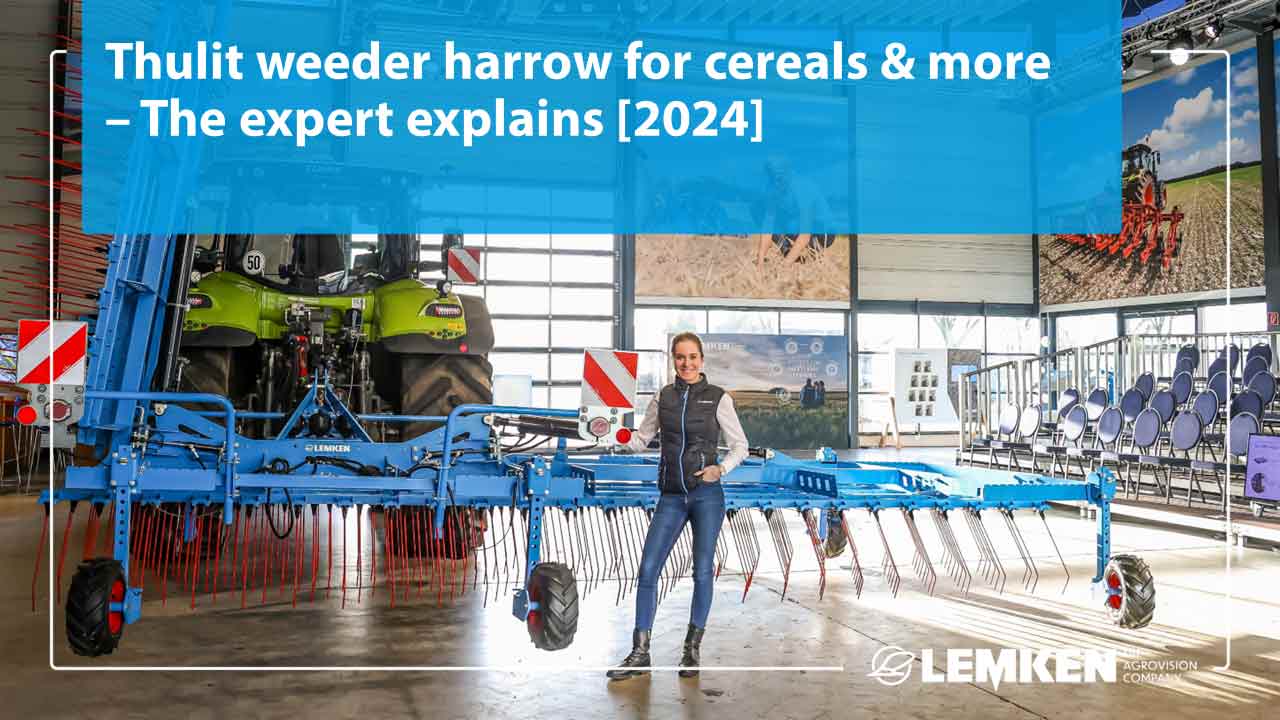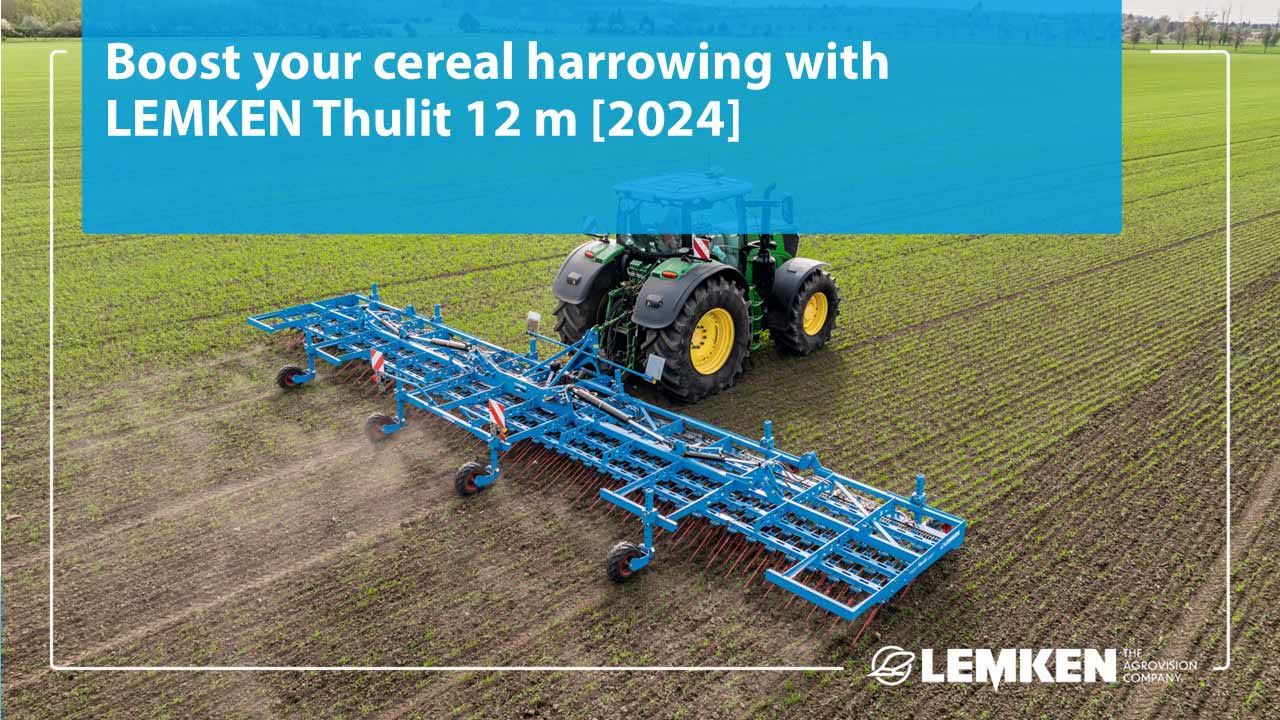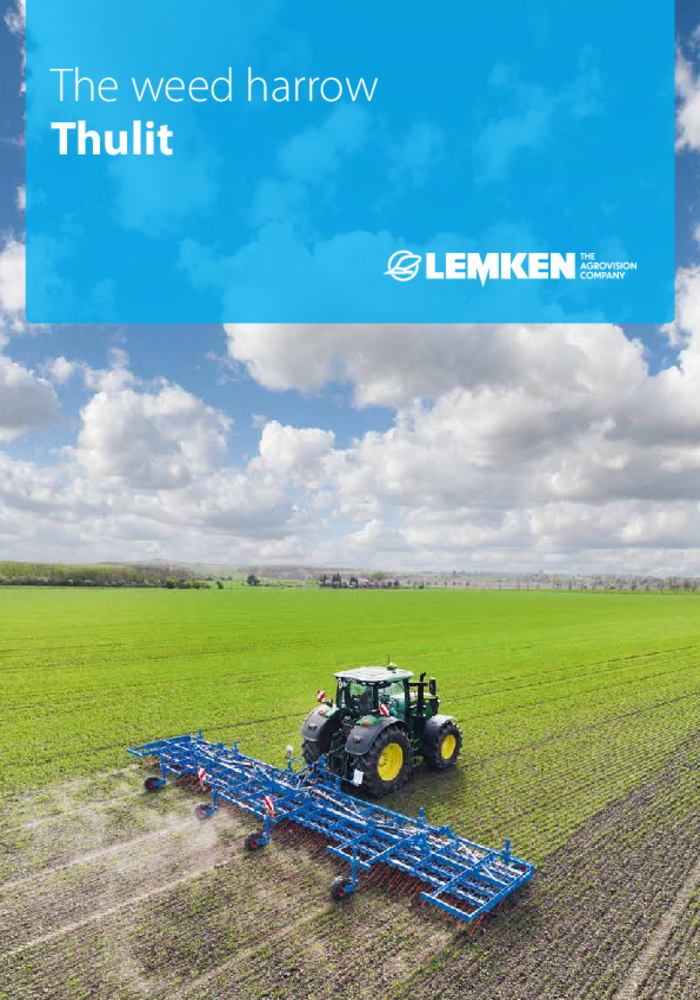Thulit
- Weed harrow with 4 bars and 8 rows
- Hydraulic tine pressure adjustment OptiTine
- Working widths 6, 9 and 12 metres
Reliable solution for modern farming systems
The LEMKEN Thulit MF stands for maximum efficiency in mechanical weed control. Developed for maximum precision and flexible application, it combines robust technology with intelligent design. Whether in conventional or organic farming, the Thulit MF enables reliable cultivation of a wide variety of crops and soil conditions.
The advantages of harrowing
- Elimination of weeds, which compete with crops for resources such as water, light and nutrients
- Aeration of the soil
- Promotion of mineralisation
- Reduction of water evaporation by breaking the capillary effect
- Levelling of the soil surface
- Promotion of tillering
Weed control right from the start
The Thulit MF weed harrow extends the time window for mechanical weed control and starts where hoeing technology reaches its limits. Together, they help to achieve weed-free crops without the use of chemical crop protection.
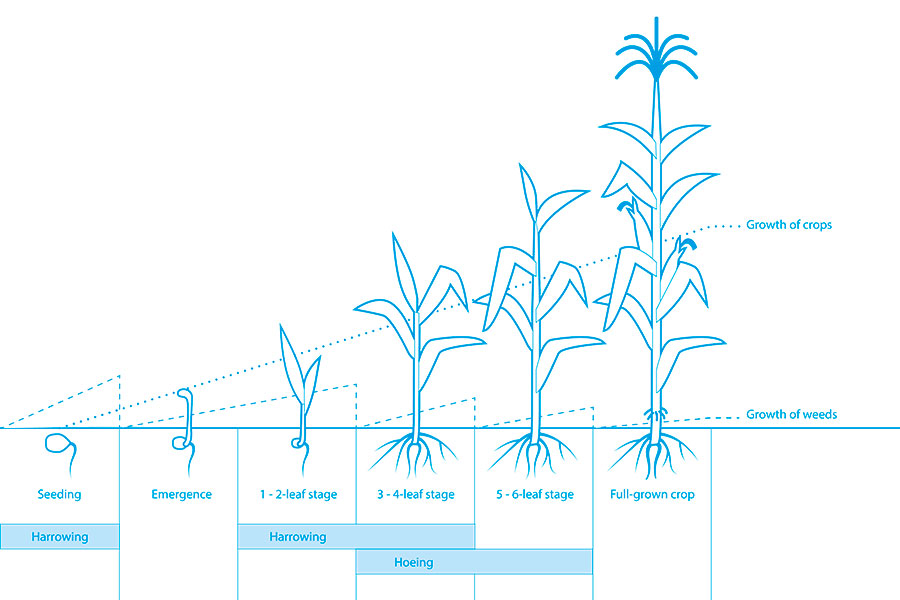
The Highlights of the Thulit
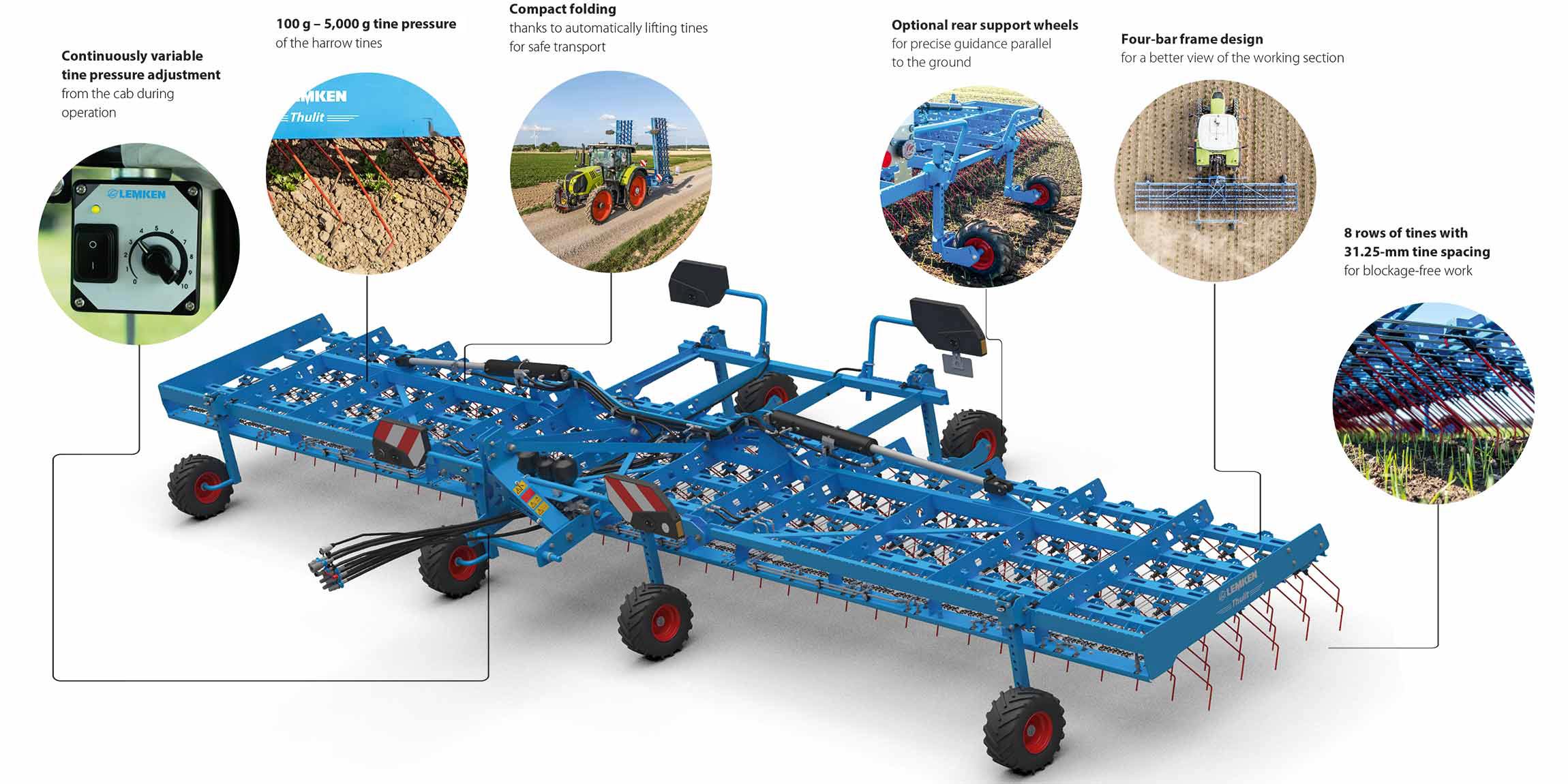
The Thulit in video
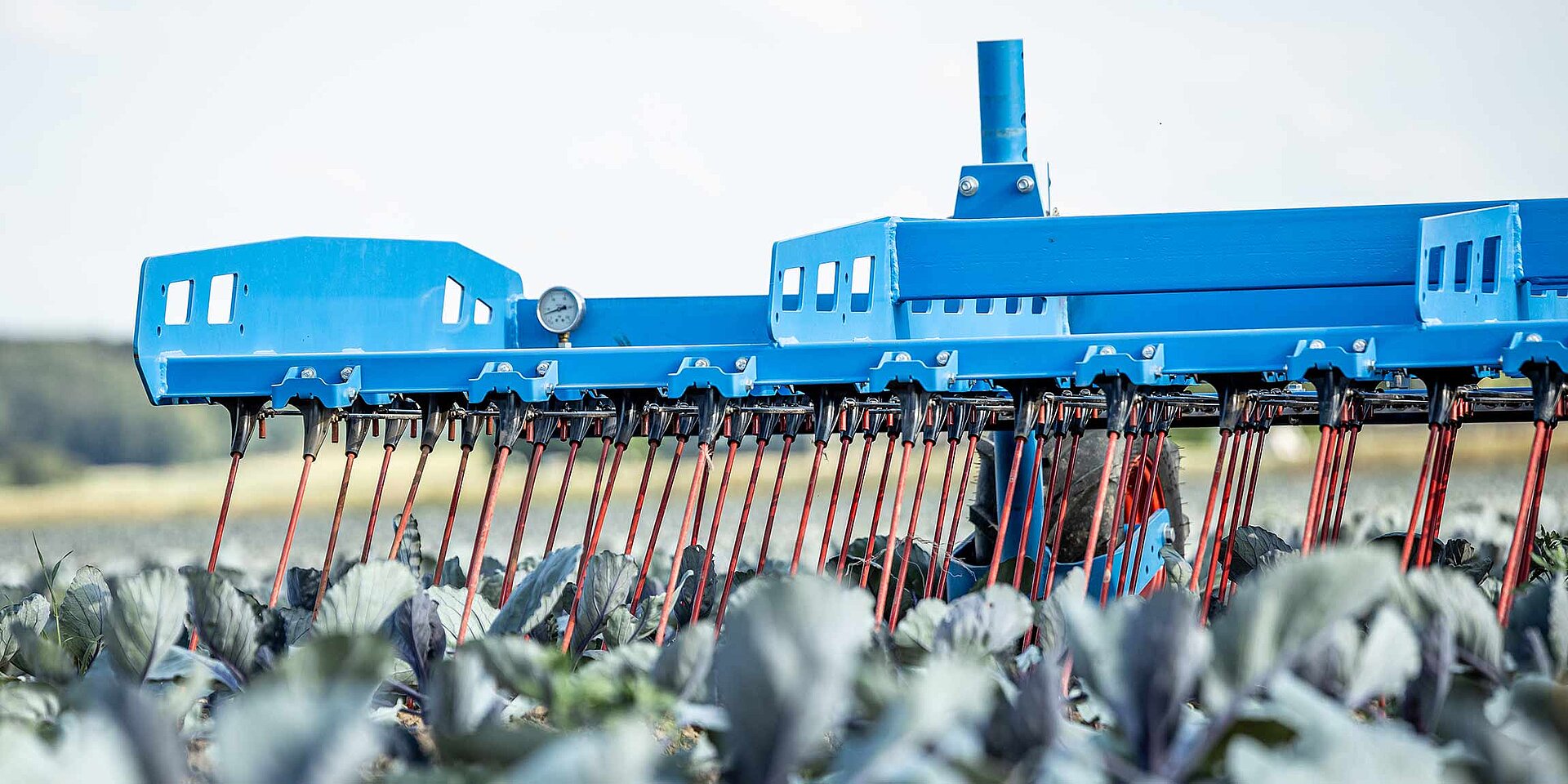
What makes Thulit so versatile?
The challenges for successful mechanical weed control are constantly growing. It must start with small and sensitive plants and be feasible in all crops and as many development stages of the plants as possible. For the Thulit harrow, LEMKEN has developed a unique combination of tine shape and hydraulic tine adjustment. It ensures a constant tine pressure over the entire process path with every adjustment.
The hydraulic tine pressure adjustment OptiTine
The tine pressure can be continuously adjusted from the tractor cab, even while driving. The adjustment options range from 100 g to a maximum contact force of 5,000 g per tine. The indirect loading of the harrow tines ensures constant pressure with every tine position or angle, both on flat surfaces and when working in ridge crops.

Each tine an individual
The tine pressure is infinitely adjustable via a hydraulic system. To ensure that each tine can be controlled separately, the tines are connected to a ram and combined in cylinder bars with 5 to 16 rams.

These form a completely closed, sealed and double-acting system, which means that the pressure is the same everywhere and the rams can work in both directions. Both the nickel-plated cylinder track and the hard chrome-plated piston rod are designed for maximum service life.
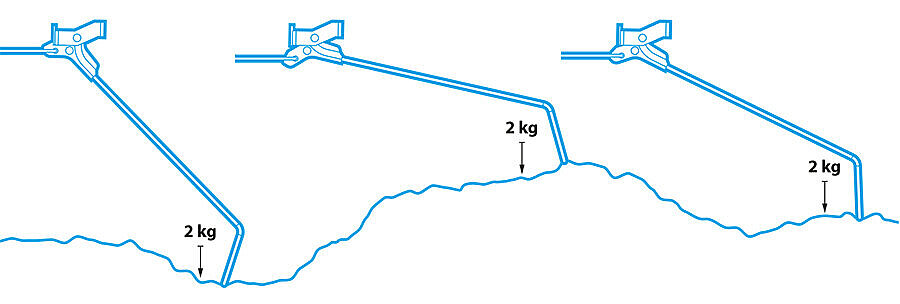
The tine shape
The tines are 575 mm long diagonally with a bend of 118°. These dimensions are optimal to ensure a constant tine pressure regardless of the tine position. With a diameter of 8 mm, they are very stable.
This ensures good power transmission to the ground and prevents lateral deflection. Therefore, they work evenly without overlaps or misses over the entire working width of the machine and reliably remove the weeds. The large wear area of 120 mm guarantees a long service life of the tines.
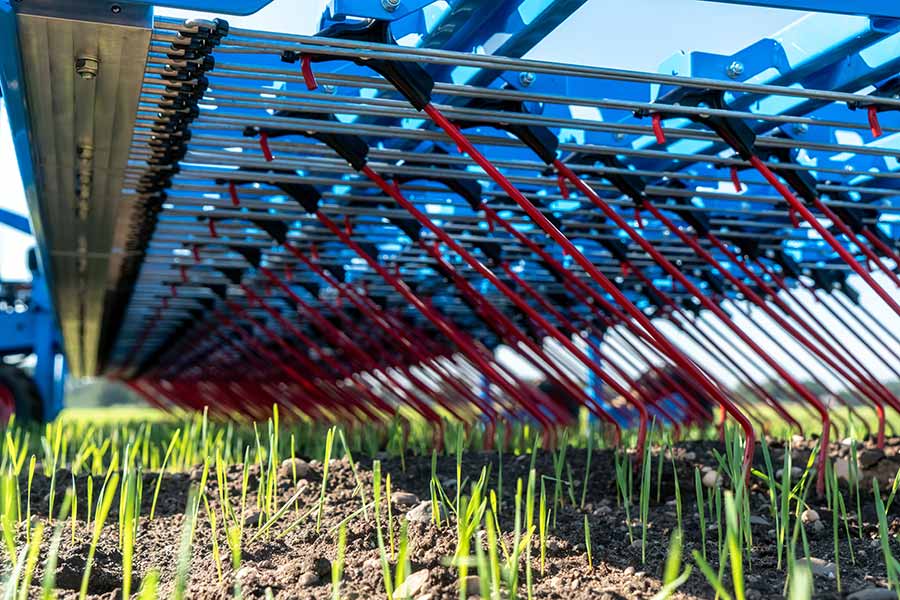
The tine quick-change system
If necessary, the tines can be easily replaced using the quick-change system. This requires only a few steps:
- Tool-free removal of the connecting rod
- Loosen the bolt
- Remove the harrow tine
- Insert the new tine
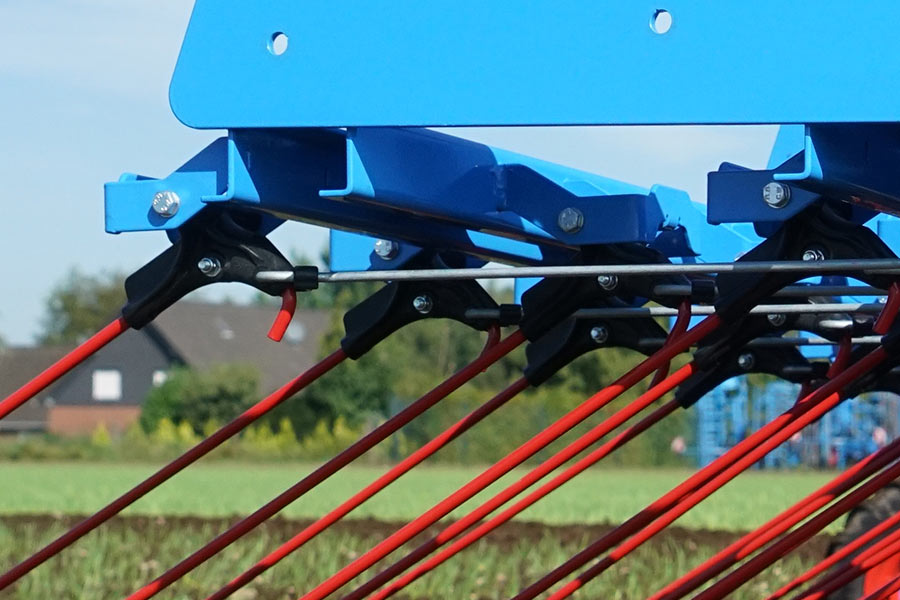
Support wheels for the correct depth guidance
The LEMKEN Thulit is available with a wide range of support wheel options for perfect results. The working height of the support wheels can be adjusted in 8 steps on the profile toolbar, allowing the aggressiveness of the tines and the clearance height to be adjusted. The profile toolbar also makes it easy to adjust the track width of the support wheels to match the row spacing of the crops.
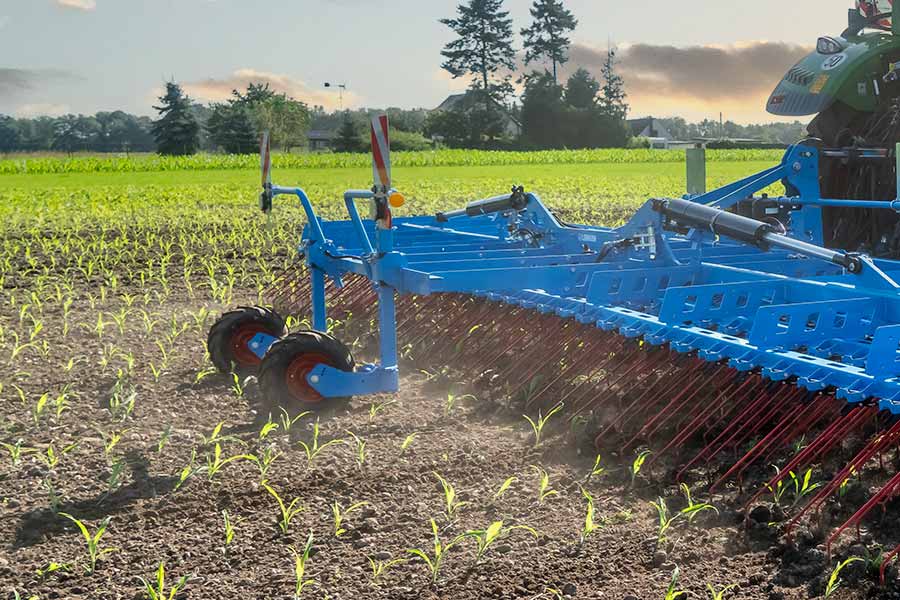
Stützradoptionen
- Vorne: 2 oder 4 Stützräder
- Hinten: 0 oder 2 Stützräder
- Vorne: 2 oder 4 Stützräder
- Hinten: 0, 2 oder 4 Stützräder
- Vorne: 6 Stützräder
- Hinten: 2, 4 oder 6 Stützräder

In a perfect frame
The Thulit always provides sufficient visibility at work, as it is based on a four-beam frame concept, in contrast to the eight beams commonly found on the market. The unique frame design with 4 bars and 8 rows of tines ensures an exceptionally stable frame. With a reduced number of bars, the beam profiles can be designed for superior stability, while also keeping the total weight low.
Everything in view
For an even clearer view of your work, the LEMKEN Thulit features a four-bar frame design instead of eight bars. Thanks to the OptiTine hydraulic tine pressure adjustment, the driver’s field of vision is not obstructed by springs. With fewer bars and moving parts in the harrow frame, the tines are clearly visible, and work results can be checked earlier and better.
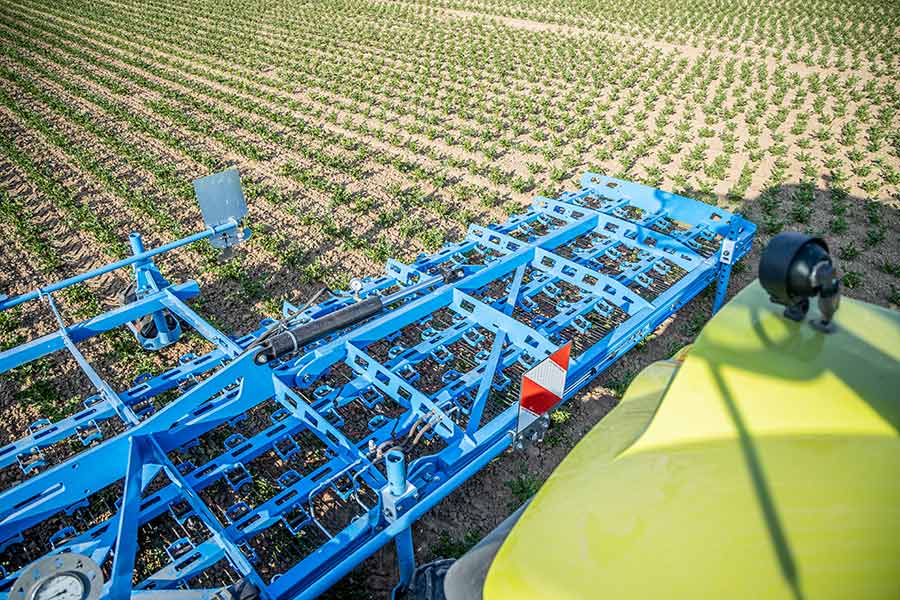
Distance for the best result
The 31.25 mm line spacing of the Thulit weed harrow is optimally adapted to the frequently used row spacing of 12.5 cm for drilling. The asymmetric tine arrangement provides up to 15% greater clearance between the tines than conventional harrows – without compromising results.
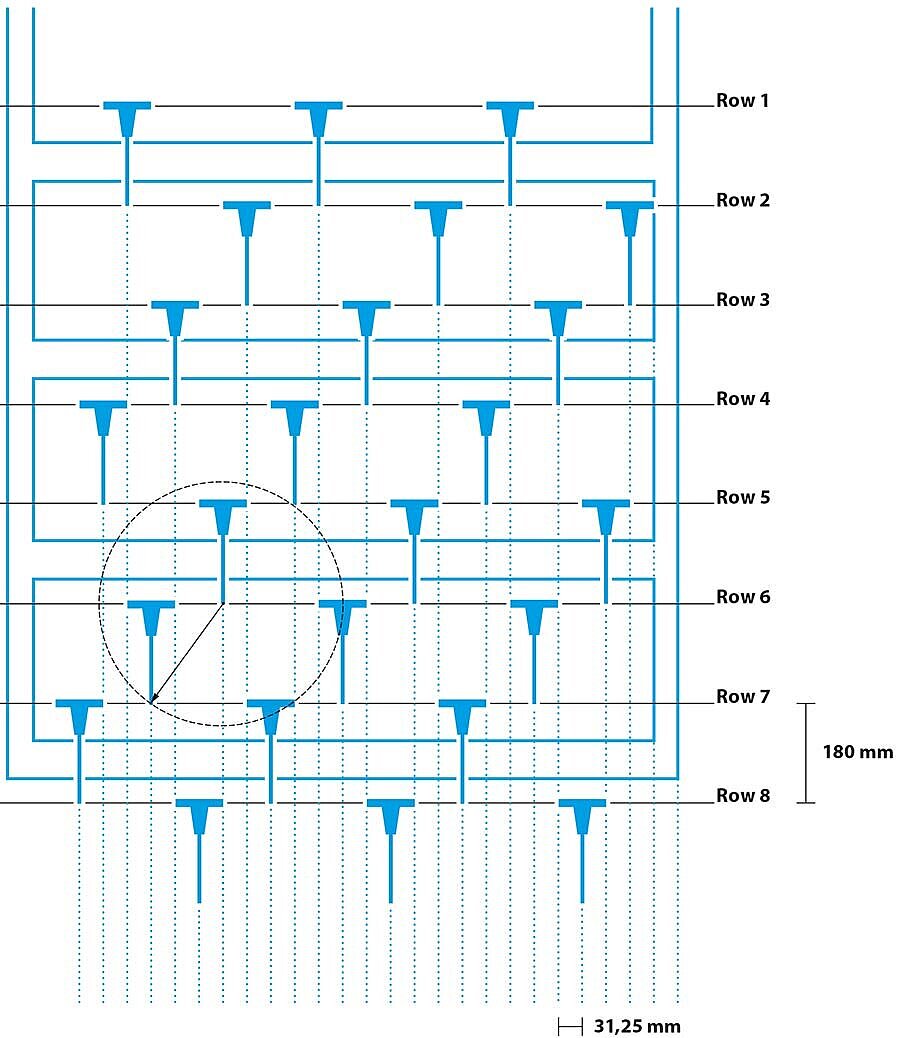
As light as possible and as heavy as necessary
Thanks to its well thought-out design and wide tine spacing, the LEMKEN Thulit requires only 32 tines per metre of working width, making this weed harrow as light as possible yet extremely stable. At the same time, it is heavy enough to make the most of its tine pressure of up to 5,000 g to produce outstanding results.
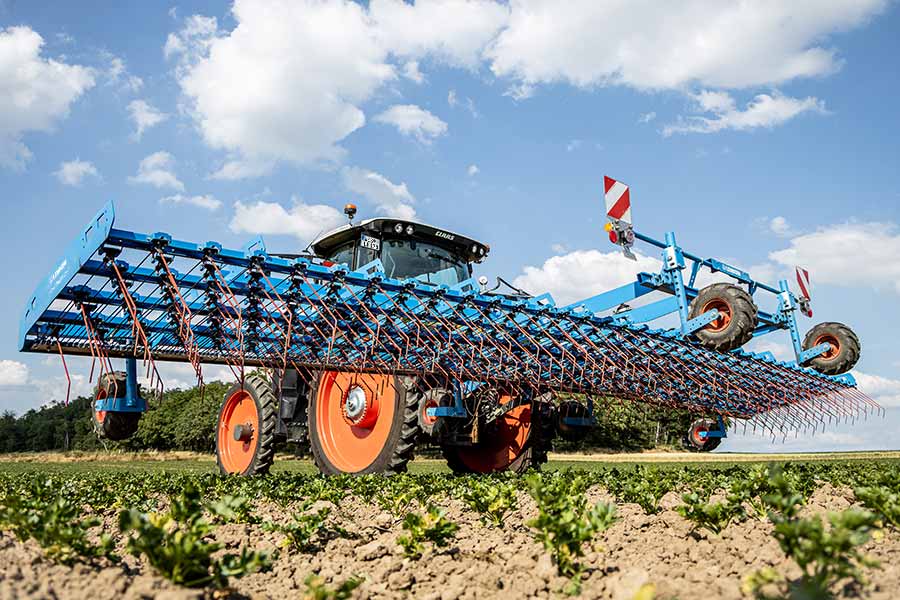
High ground clearance
The LEMKEN Thulit weed harrow is also particularly impressive due to its high ground clearance. There are no springs or other sharp components under the 450 mm high frame in which plants could get caught. This also simplifies harrowing in ridge crops or late growth stages, as blockages are reduced to a minimum.

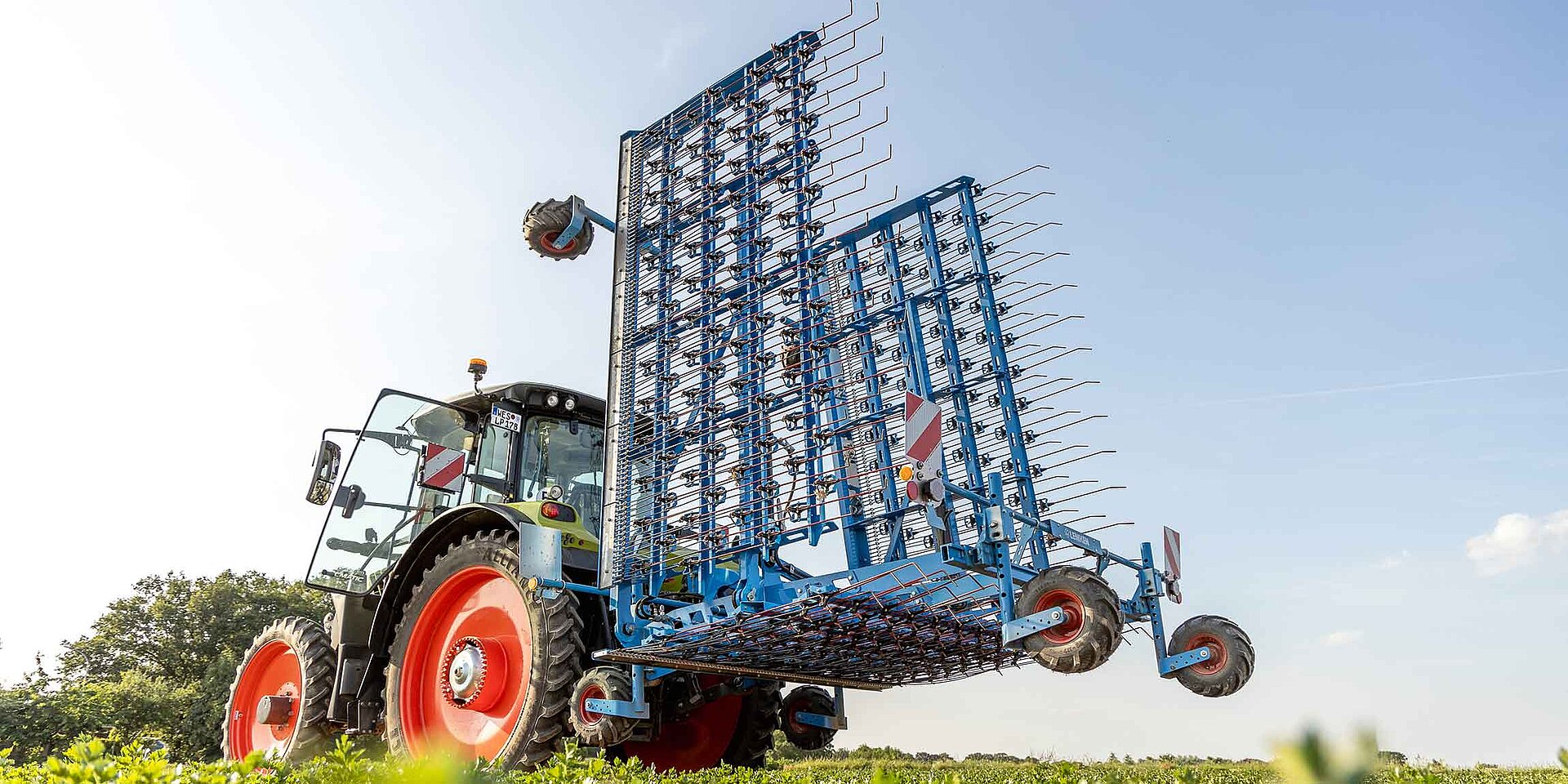
Folded tight
The harrow tines can be folded in easily via a toggle switch in the cab, making bent tines on the headland or trapped foreign objects a thing of the past. When the tines are in the folded transport position, the implement also complies with the permissible transport width for safe and compact road transport.
A fitting fold
For working with a smaller working width and for avoiding obstacles, the weed harrow can optionally be folded on one side only. The 9 and 12-metre versions additionally offer the option of raising the implement into a V-position for turning. To do this, the outer folding segments are angled in slightly. This protects the crop from damage caused by the tines. The process for V-folding or single-sided folding is triggered via the optional control box. If this option is used, one spool valve is required on the tractor instead of three.

Technical data
| Thulit MF/600 | Thulit MF/900 | Thulit MF/1200 | |
|---|---|---|---|
| Working width (cm) | 600 | 900 | 1200 |
| Power requirements (hp) from - to | min. 45 | min. 70 | min. 66 |
| Power requirements (kW) from - to | min. 33 | min. 51 | min. 90 |
| Weight (kg) | 1.100 | 1.440 | 2.100 |
| Transport width (m) | 2,95 | 2,95 | 2,95 |
| Transport height (m) | 2,20 | 3,68 | 3,30 |
Basic equipment
- Lower link attachment 6 m - 9 m: Cat.2 (pr Cat.3N=L2 Z3 or Cat. 3) 12m: Cat. 3N= L2 Z3 (or Cat. 3)
- Underframe clearance 45cm
- Line distance 31,25mm
- 8 rows of tines, 4 bars
- Hydraulic stepless tine pressure 0,1 - 5kg
- Tine pressure via Load sensing
- Hydraulic tine lift-up for safe road transport
- Easy tine replacement by one screw
- Depth control wheel, front 6 m -9 m: 2x 16x6.50-8, 408 x 155 mm, 12 m: 6x 16x6.50-8, 408 x 155mm
- Switch box with rotary potentiometer for controlling the tine pressure and for switching from transport to working position
The availability and basic equipment of the machine may vary depending on the country. Please contact your dealer.
Do you still have questions?
Our experts will be happy to answer your questions, just send us an e-mail!

Sarah Wolf
Product expert Crop Care
What needs to be considered when using a weed harrow?
- The soil must be well prepared
- The sowing depth must be below the working depth of the harrow.
- The weather conditions should be suitable: dry, sunny, windy.
- The smaller the weeds, the more effective the work on emerging weeds.
- The effect of the harrow depends on the speed, position and pressure of the tines.
- The following factors must be taken into account when setting the aggressiveness: Plant stage, soil hardness and weed roots.
The where and when of harrowing
The harrow pulls out or buries small weeds and breaks up soil incrustations. This not only saves on pesticides, but also has positive effects on the soil. The aeration has a clear effect on nitrogen mineralisation. In addition, harrowing promotes the tillering of the crop and has a positive effect on the water balance. The levelling of the soil facilitates all future operations.
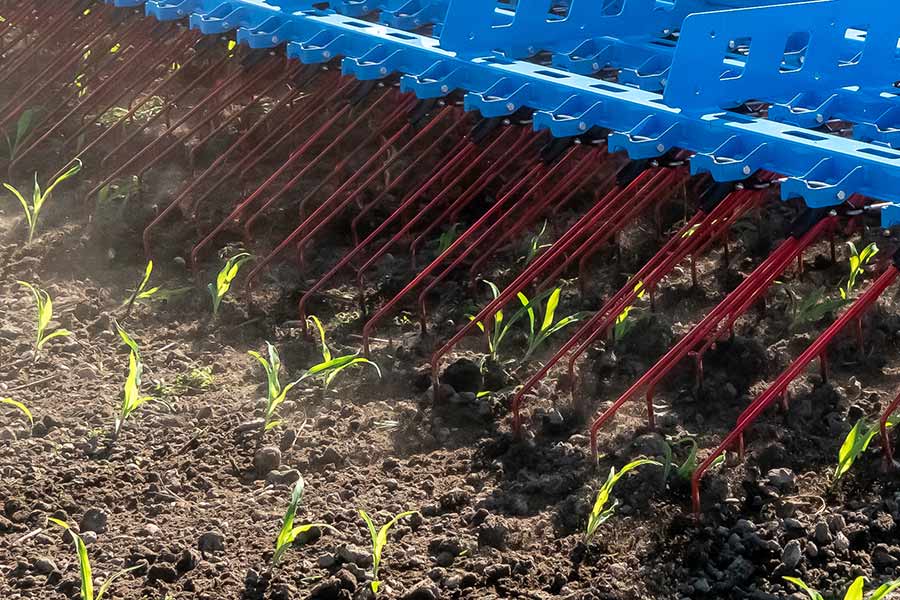
The Thulit weed harrow can be used in a variety of ways in field crops such as cereals, maize or vegetables and in ridged crops, e.g. potatoes.
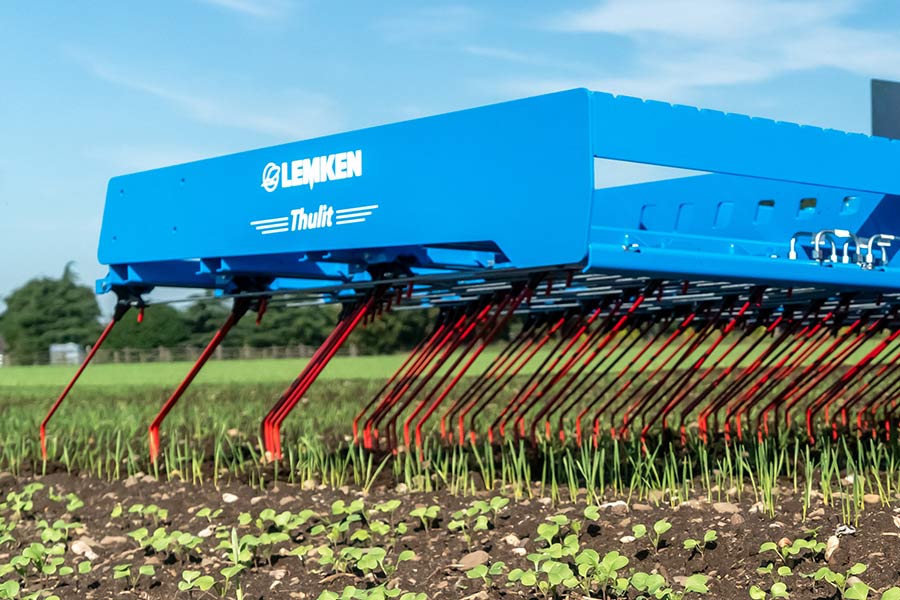
The Thulit can be used for weed control almost all year round. Even before sowing, the freshly germinated weeds can be removed from a false seedbed created weeks before. Immediately after sowing, it is used for pre-emergence weed control. Depending on the growth of the plants, it can be used as long as the size and density of the crop allows, or until the hoeing machine is used. For maize, for example, this is the 3 to 4 leaf stage.
